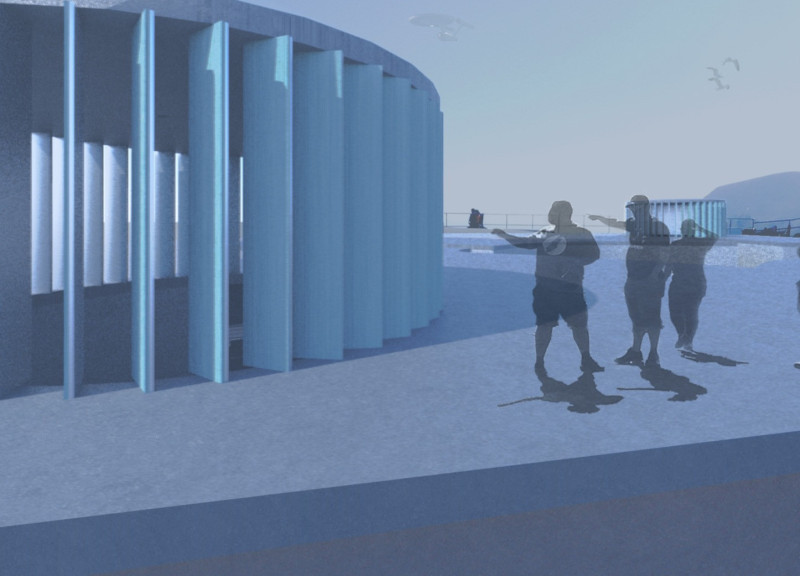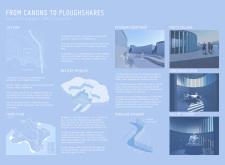5 key facts about this project
The Pavilion of Humanity is located on Battery Spencer in the Marin Headlands, overlooking the San Francisco Bay. Once a military fortification, the site has been reimagined as a space for public use. Visitors can now engage with both the natural and historical significance of the area while enjoying sweeping views of the landscape. The design establishes a connection between new and old structures, creating a functional environment that respects the history of the site.
Design Intent
The design centers around the relationship between the pavilion and Battery Spencer. Flowing walls wrap around the historical structure, creating defined spaces without altering the site's character. This careful approach minimizes the need for extensive excavation and preserves the original military architecture, allowing it to remain a part of the overall experience.
Functionality and Space
The pavilion is designed with multiple areas that serve various purposes. It includes a gallery exhibit, a conference room, a workshop, a café/bar, and an outdoor performance space. This arrangement encourages community engagement, as it accommodates a range of activities from exhibitions to gatherings. The design fosters an inviting environment for visitors and local residents alike.
Material Choices
Materials used in the pavilion align with principles of sustainability. Reusable insulated concrete blocks form the walls, lowering environmental impact and improving energy efficiency. Additionally, weathered copper panels are chosen for their durability and visual appeal. These materials connect the pavilion to the historical context of the area, providing a link to the past while ensuring the structure can endure the elements.
Dynamic Features
A notable aspect of the design is the innovative paneling along the north corridor and circular outcrops. These panels can rotate around a central point, responding to changing sunlight and wind. This feature enhances passive heating and cooling, showcasing energy-efficient design strategies while allowing the building to adapt naturally to its environment.
The pavilion’s design emphasizes a thoughtful balance between honoring historical significance and providing a modern space for public interaction. The rotating panels create shifting patterns of light and shadow, fostering an engaging atmosphere that encourages visitors to explore and reflect.




















































